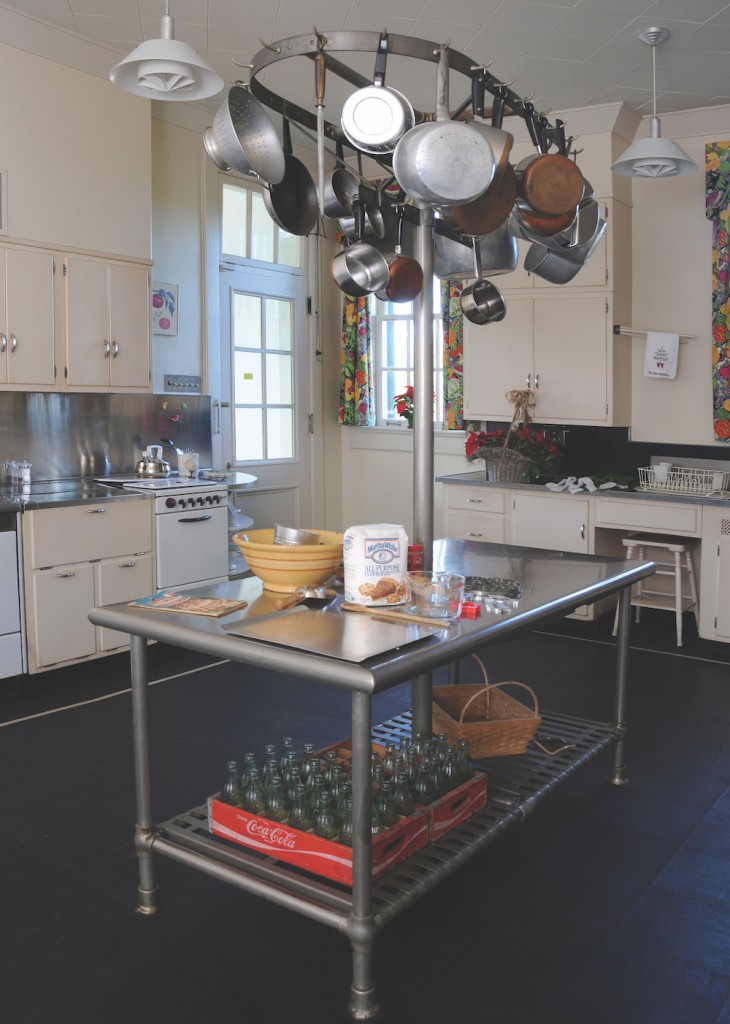In 1915, Fuller and Ida Callaway were planning their new house at Hills and Dales. Neel Reid, one of the architects, was instrumental in helping them choose much of the furniture for the home. When it came to the kitchen, Fuller and Ida chose a beautiful Monel table to serve as an island work space. In the early 1940’s when Fuller Jr. remodeled the service area of the home, he decided to keep the Monel table. This table is both practical and striking!
Monel was introduced as a new alloy in 1905. It wasn’t really promoted as a material to be used in the kitchen for counter and table tops until the late 1920’s; so, Mr. Callaway was ahead of his time in choosing this metal. Robert Crooks Stanley (1876-1951), a mechanical and mining engineer, discovered Monel while working for the International Nickel Company (INCO) in 1901. The new alloy was named in honor of the president of the company, Ambrose Monell. (Family names were not allowed as trademarks at that time so one “l” was dropped in the spelling of the new product.)
The large concentration of nickel in this metal gives it a luster unlike stainless steel. Monel also contains copper, iron, manganese, carbon and silicon. Stronger than pure nickel and stronger than steel, Monel alloys are resistant to corrosion by many agents including rapidly flowing sea water, hot and cold working machinery and atmospheric corrosion. This impressive metal was sometimes used for military “dog tags” in WWI and WWII. The greenish roof of Pennsylvania Station is Monel also. Monel began to be replaced by stainless steel in the 1950’s as stainless steel could produce the same forms at a lower cost.
Today, Monel is widely used in the building of ships, airplanes, valve pistons in high end brass musical instruments, electric bass guitar strings and even in frames for glasses. When visiting Hills & Dales Estate, savor the beauty and uniqueness of this timeless table in the Callaway kitchen!
